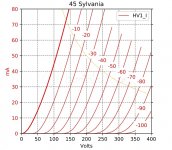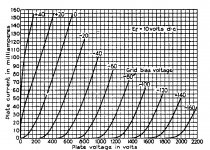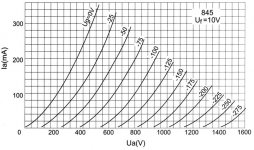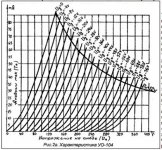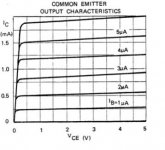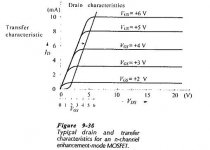I have followed most of the posts today.
The new XO design measures at -150dB , no one has them yet except andrea and you can see the comment on them in post #910.
The only possible claim that can be made from that test is that -97dB is audible, hearing a clear difference between -124dB and -97dB XO doesnt imply up to -124dB is audible (see #898) or did I miss that?
It sounds like that can of worms has been opened before, so then there should some sort of summarised explanation that can be given instead of ignoring the question? Otherwise a large hole is left any argument related to THD, like that one. I have actually tried to find any theory or explanation to this but couldn't.
However you can instantly find the explanation to why people can prefer amps with higher THD 'because it's adds pleasant colouration'
The new XO design measures at -150dB , no one has them yet except andrea and you can see the comment on them in post #910.
The only possible claim that can be made from that test is that -97dB is audible, hearing a clear difference between -124dB and -97dB XO doesnt imply up to -124dB is audible (see #898) or did I miss that?
It sounds like that can of worms has been opened before, so then there should some sort of summarised explanation that can be given instead of ignoring the question? Otherwise a large hole is left any argument related to THD, like that one. I have actually tried to find any theory or explanation to this but couldn't.
However you can instantly find the explanation to why people can prefer amps with higher THD 'because it's adds pleasant colouration'
Last edited:
You do realise that the test Toole was talking about was a single speaker not a stereo pair?
The beauty of the test is that besides all other factors that decide an outcome, a new one was found and I heard nobody argue it.
One could also say tube amps sound better because they euphonically add more "weight" to the sound and by that coincidentally make for a better House Curve.
It's impossible to state a certain amp will be transparent or more true, in a complete audio set, on the basis of thd-numbers.
Edit: P.S. I don't own any tube equipment at all.
The powerful non-linear device with tons of negative feedback seemed like the panacea for all ills.
But later it turned out that the problems this approach added far outweighed the benefits.
And later still, it turned out, those were fixed too.
I have followed most of the posts today.
The new XO design measures at -150dB , no one has them yet except andrea and you can see the comment on them in post #910.
The only possible claim that can be made from that test is that -97dB is audible, hearing a clear difference between -124dB and -97dB XO doesnt imply up to -124dB is audible (see #898) or did I miss that?
It sounds like that can of worms has been opened before, so then there should some sort of summarised explanation that can be given instead of ignoring the question? Otherwise a large hole is left any argument related to THD, like that one. I have actually tried to find any theory or explanation to this but couldn't.
However you can instantly find the explanation to why people can prefer amps with higher THD 'because it's adds pleasant colouration'
Exactly. I think the thd examples for an amp has one important part overlooked, amongst possibly others and that is that in general, the output impedance contributes to a large part to the perceived differences in sound. Those are the ones that are hard to take into account when putting an amp on the test bench.
The equivalent in clocks for dacs etc are that when substituting the standard clock with a higher end model or type, both power supply as well as interface cabling would normally also be changed. So we're really comparing apples to oranges in that case.
Sure, in the TI-paper this doesn't/shouldn't apply, but it surely can be the explanation why in the lab the results are way different than in one's home.
Hence my strong reluctance to consider something proven in the lab, to be of absolute truth at home.
It really is a can of worms.
But, all things being equal, I would take less thd, less phase noise over the other, yet how does one choose between e.g
measurement results that are different, yet comparable and there is a difference in sq?
If only THD was the only metric that was ever used to characterise/demonise euphonic and/or non-linear tube gear and it was used above all else, in isolation—then this strawman may not fall over with the faintest breeze.
Old habits die hard.
Same goes for clocks: it matters a lot what kind of signal (sine, clipped sine or square) the clock signal has, as well as amplitude. In other words the interface matters. In lab reports less so.
Regarding TI jitter pdfs for audio clock jitter, its clear that those guys consider jitter and phase noise to be two different things:
https://www.ti.com/lit/an/slyt705/s...32695&ref_url=https%3A%2F%2Fwww.google.com%2F
Same for Analog Devices:
https://www.analog.com/media/en/technical-documentation/application-notes/AN-756.pdf
Neither company to my knowledge has ever addressed the question of close-in phase noise for audio data converters.
Andrea Mori has been talking exclusively about close-in phase noise.
It is close-in phase noise that affects radar performance.
So, the argument already shifted to how good does clock phase noise have to be in order to be inaudible by any human on earth, using any audio dac technology, and any reproduction system one might want to use. In other words, what is the worst case requirement for low phase noise?
The answer is nobody knows.
However, since we are all human we all tend to form conclusions based on insufficient information. Many of us will use confirmation bias to convince ourselves our hunches and intuitions are absolutely right. In other words, we aren't always such good scientists as we like to think of ourselves. Particularly so we are out of our area of expertise.
Nobody in this forum, possibly excepting Jakob2, is an expert in human perceptual testing.
Nobody in this forum has the clocks, dacs, and reproductions systems necessary to perform such testing to a worst case hard limit.
Thus, we are in the area of opinion, and of personal experience. If somebody says they heard a difference between clocks, fine with me. I will take it as a data point. I don't think its worthless in a statistical sense, although I'm sure there will be some noise in the data.
In terms of people imagining things, IMHO we have more conspiracy theory type thinking around here about people secretly trying to sell things than we have people hallucinating that clocks sound different.
https://www.ti.com/lit/an/slyt705/s...32695&ref_url=https%3A%2F%2Fwww.google.com%2F
Same for Analog Devices:
https://www.analog.com/media/en/technical-documentation/application-notes/AN-756.pdf
Neither company to my knowledge has ever addressed the question of close-in phase noise for audio data converters.
Andrea Mori has been talking exclusively about close-in phase noise.
It is close-in phase noise that affects radar performance.
So, the argument already shifted to how good does clock phase noise have to be in order to be inaudible by any human on earth, using any audio dac technology, and any reproduction system one might want to use. In other words, what is the worst case requirement for low phase noise?
The answer is nobody knows.
However, since we are all human we all tend to form conclusions based on insufficient information. Many of us will use confirmation bias to convince ourselves our hunches and intuitions are absolutely right. In other words, we aren't always such good scientists as we like to think of ourselves. Particularly so we are out of our area of expertise.
Nobody in this forum, possibly excepting Jakob2, is an expert in human perceptual testing.
Nobody in this forum has the clocks, dacs, and reproductions systems necessary to perform such testing to a worst case hard limit.
Thus, we are in the area of opinion, and of personal experience. If somebody says they heard a difference between clocks, fine with me. I will take it as a data point. I don't think its worthless in a statistical sense, although I'm sure there will be some noise in the data.
In terms of people imagining things, IMHO we have more conspiracy theory type thinking around here about people secretly trying to sell things than we have people hallucinating that clocks sound different.
Last edited:
Sooooo... if I understand correctly, there are humans who claim they can hear the phase noise effect in a DAC, around -150dB @10Hz, by listening through a SET amplifier with 1% distortions.
This qualifies as weapons grade BS.
Maybe I was not clear enough.
I, and not just me, clearly heard the difference between the Crystek CCHD-957 (-97 dBc at 10 Hz from the carrier) and the emitter coupled oscillators (-127 dBc at 10 Hz from the carrier).
The difference is huge, so you don't need a bionic ear to feel the difference.
Then I have not yet tried listening to the difference between the emitter coupled and the -150 dBc oscillator in a suitable setup.
I will do it soon, but since we are odinary hobbyists without commercial interests our times are usually very long.
Indeed we are still working on a FIFO and a discrete DAC, as soon as they are ready I will do the test.
In the meantime if you own a suitable setup to measure the effect of phase noise at DAC output you are welcome.
I would be very happy to see your measurements.
And later still, it turned out, those were fixed too.
Evidently I missed them.
What are these solid state devices that have solved the problems?
The linearity of the vacuum tubes I have pointed out is clear and documented (curves attached).
So please publish the curves of the solid state devices you are referring.
Anyway for this topic there is a more appropriate thread
Sound Quality Vs. Measurements
Attachments
Old habits die hard.
Same goes for clocks: it matters a lot what kind of signal (sine, clipped sine or square) the clock signal has, as well as amplitude. In other words the interface matters. In lab reports less so.
It's not true, the kind of signal sine or square and the amplitude don't matter.
The plots I have published about the noise of the picogates clearly demonstrate that the close in phase noise is not altered by the kind of signal and by the amplitude.
The picogate have been used to square the sine output of the oscillator and the close in phase noise is almost identical.
I was referring to the problems, not the devices.
So, please let me know how the problems have been solved.
What problems that were added far outweighed the benefits?But later it turned out that the problems this approach added far outweighed the benefits.
What problems that were added far outweighed the benefits?
You should know what problems since you wrote "those were fixed too"
Evidently I missed them.
What are these solid state devices that have solved the problems?
So please publish the curves of the solid state devices you are referring.
[/URL]
Its all in how you use the devices. BJT current driven are pretty linear. Mosfet transfer curve is voltage driven and quite linear.
As Scott mentioned its possible to build simple circuits with extreme linearity using these devices and no feedback. There are other considerations that lead to more complex circuits and need for feedback.
Attachments
I will do it soon, but since we are odinary hobbyists without commercial interests our times are usually very long.
Indeed we are still working on a FIFO and a discrete DAC, as soon as they are ready I will do the test.
May I ask, who's "we"?
- Home
- Source & Line
- Digital Line Level
- AK4499EQ - Best DAC ever
